APS 2015 Annual Report Download - page 70
Download and view the complete annual report
Please find page 70 of the 2015 APS annual report below. You can navigate through the pages in the report by either clicking on the pages listed below, or by using the keyword search tool below to find specific information within the annual report.-
 1
1 -
 2
2 -
 3
3 -
 4
4 -
 5
5 -
 6
6 -
 7
7 -
 8
8 -
 9
9 -
 10
10 -
 11
11 -
 12
12 -
 13
13 -
 14
14 -
 15
15 -
 16
16 -
 17
17 -
 18
18 -
 19
19 -
 20
20 -
 21
21 -
 22
22 -
 23
23 -
 24
24 -
 25
25 -
 26
26 -
 27
27 -
 28
28 -
 29
29 -
 30
30 -
 31
31 -
 32
32 -
 33
33 -
 34
34 -
 35
35 -
 36
36 -
 37
37 -
 38
38 -
 39
39 -
 40
40 -
 41
41 -
 42
42 -
 43
43 -
 44
44 -
 45
45 -
 46
46 -
 47
47 -
 48
48 -
 49
49 -
 50
50 -
 51
51 -
 52
52 -
 53
53 -
 54
54 -
 55
55 -
 56
56 -
 57
57 -
 58
58 -
 59
59 -
 60
60 -
 61
61 -
 62
62 -
 63
63 -
 64
64 -
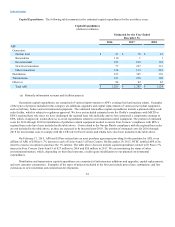 65
65 -
 66
66 -
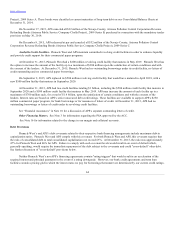 67
67 -
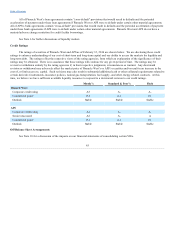 68
68 -
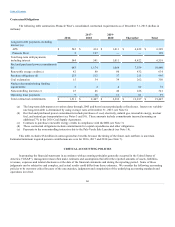 69
69 -
 70
70 -
 71
71 -
 72
72 -
 73
73 -
 74
74 -
 75
75 -
 76
76 -
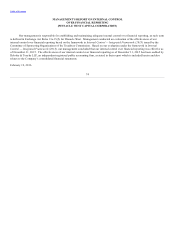 77
77 -
 78
78 -
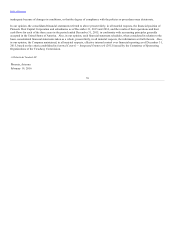 79
79 -
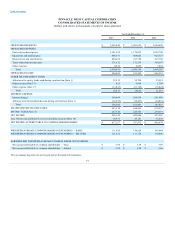 80
80 -
 81
81 -
 82
82 -
 83
83 -
 84
84 -
 85
85 -
 86
86 -
 87
87 -
 88
88 -
 89
89 -
 90
90 -
 91
91 -
 92
92 -
 93
93 -
 94
94 -
 95
95 -
 96
96 -
 97
97 -
 98
98 -
 99
99 -
 100
100 -
 101
101 -
 102
102 -
 103
103 -
 104
104 -
 105
105 -
 106
106 -
 107
107 -
 108
108 -
 109
109 -
 110
110 -
 111
111 -
 112
112 -
 113
113 -
 114
114 -
 115
115 -
 116
116 -
 117
117 -
 118
118 -
 119
119 -
 120
120 -
 121
121 -
 122
122 -
 123
123 -
 124
124 -
 125
125 -
 126
126 -
 127
127 -
 128
128 -
 129
129 -
 130
130 -
 131
131 -
 132
132 -
 133
133 -
 134
134 -
 135
135 -
 136
136 -
 137
137 -
 138
138 -
 139
139 -
 140
140 -
 141
141 -
 142
142 -
 143
143 -
 144
144 -
 145
145 -
 146
146 -
 147
147 -
 148
148 -
 149
149 -
 150
150 -
 151
151 -
 152
152 -
 153
153 -
 154
154 -
 155
155 -
 156
156 -
 157
157 -
 158
158 -
 159
159 -
 160
160 -
 161
161 -
 162
162 -
 163
163 -
 164
164 -
 165
165 -
 166
166 -
 167
167 -
 168
168 -
 169
169 -
 170
170 -
 171
171 -
 172
172 -
 173
173 -
 174
174 -
 175
175 -
 176
176 -
 177
177 -
 178
178 -
 179
179 -
 180
180 -
 181
181 -
 182
182 -
 183
183 -
 184
184 -
 185
185 -
 186
186 -
 187
187 -
 188
188 -
 189
189 -
 190
190 -
 191
191 -
 192
192 -
 193
193 -
 194
194 -
 195
195 -
 196
196 -
 197
197 -
 198
198 -
 199
199 -
 200
200 -
 201
201 -
 202
202 -
 203
203 -
 204
204 -
 205
205 -
 206
206 -
 207
207 -
 208
208 -
 209
209 -
 210
210 -
 211
211 -
 212
212 -
 213
213 -
 214
214 -
 215
215 -
 216
216 -
 217
217 -
 218
218 -
 219
219 -
 220
220 -
 221
221 -
 222
222 -
 223
223 -
 224
224 -
 225
225 -
 226
226 -
 227
227 -
 228
228 -
 229
229 -
 230
230 -
 231
231 -
 232
232 -
 233
233 -
 234
234 -
 235
235 -
 236
236 -
 237
237 -
 238
238 -
 239
239 -
 240
240 -
 241
241 -
 242
242 -
 243
243 -
 244
244 -
 245
245 -
 246
246 -
 247
247 -
 248
248 -
 249
249 -
 250
250 -
 251
251 -
 252
252 -
 253
253 -
 254
254 -
 255
255 -
 256
256 -
 257
257 -
 258
258 -
 259
259 -
 260
260 -
 261
261 -
 262
262 -
 263
263 -
 264
264
 |
 |

Table of Contents
Regulatory Accounting
Regulatory accounting allows for the actions of regulators, such as the ACC and FERC, to be reflected in our financial
statements. Their actions may cause us to capitalize costs that would otherwise be included as an expense in the current period by
unregulated companies. Regulatory assets represent incurred costs that have been deferred because they are probable of future
recovery in customer rates. Regulatory liabilities generally represent expected future costs that have already been collected from
customers. Management continually assesses whether our regulatory assets are probable of future recovery by considering factors such
as applicable regulatory environment changes and recent rate orders to other regulated entities in the same jurisdiction. This
determination reflects the current political and regulatory climate in Arizona and is subject to change in the future. If future recovery of
costs ceases to be probable, the assets would be written off as a charge in current period earnings. We had $1,364 million of regulatory
assets and $1,140 million of regulatory liabilities on the Consolidated Balance Sheets at December 31, 2015.
Included in the balance of regulatory assets at December 31, 2015 is a regulatory asset of $619 million for pension benefits.
This regulatory asset represents the future recovery of these costs through retail rates as these amounts are charged to earnings. If these
costs are disallowed by the ACC, this regulatory asset would be charged to OCI and result in lower future earnings.
See Notes 1 and 3 for more information.
Pensions and Other Postretirement Benefit Accounting
Changes in our actuarial assumptions used in calculating our pension and other postretirement benefit liability and expense can
have a significant impact on our earnings and financial position. The most relevant actuarial assumptions are the discount rate used to
measure our liability and net periodic cost, the expected long-term rate of return on plan assets used to estimate earnings on invested
funds over the long-term, the mortality assumptions, and the assumed healthcare cost trend rates. We review these assumptions on an
annual basis and adjust them as necessary.
The following chart reflects the sensitivities that a change in certain actuarial assumptions would have had on the December 31,
2015 reported pension liability on the Consolidated Balance Sheets and our 2015 reported pension expense, after consideration of
amounts capitalized or billed to electric plant participants, on Pinnacle West’s Consolidated Statements of Income (dollars in millions):
Increase (Decrease)
Actuarial Assumption (a)
Impact on
Pension
Liability
Impact on
Pension
Expense
Discount rate:
Increase 1%
$ (329)
$ (11)
Decrease 1%
399
16
Expected long-term rate of return on plan assets:
Increase 1%
—
(13)
Decrease 1%
—
13
(a) Each fluctuation assumes that the other assumptions of the calculation are held constant while the rates are changed by one
percentage point.
67
